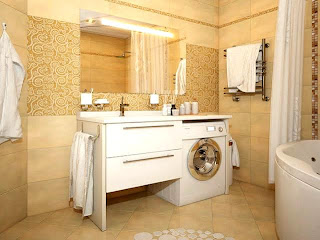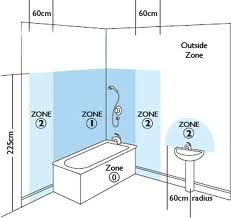Food Safety
A Guide to Running a Food Business from Home
This guidance will answer some of the important questions you may have and provide
information you need to prepare and handle food safely at home.
Introduction
If you are preparing or handling food on a regular basis at home that is to be consumed
somewhere else or by someone else, then this guide applies to you.
This guidance will help you meet the requirements of the hygiene regulations. It
will also provide the information you need to show you produce safe food.
If you are preparing or handling food at home and it is eaten by members of the
public (even if it is free to consumers), it is your responsibility to make sure
your food does not make people ill.
Extra care must be taken if you provide food for vulnerable groups. These include
young children under 5, pregnant women, older people over 65 or anyone who is ill
or immuno-compromised.
Who does this apply to?
This applies to everyone who prepares or handles food at home whether for weddings,
parties, group meetings such as lunch clubs, church and village halls, social clubs
who provide food for members, cake makers, community centre’s, child minders, farmers
markets and boot fair or market stalls that sell food.
Will I be inspected?
Each person preparing or handling food at home will be assessed individually to
determine if your operation is deemed to be a commercial food business. South Ayrshire
Council Environmental Health Office will advise you on this. Contact details are
provided at the end of this guidance. If your business is considered to be a commercial
food business, then your kitchen will be inspected.
If you prepare food at the site where it is to be eaten, then your business can
be registered at that premises address and your home will not be inspected – your
business will be covered by that premises registration.
Food safety guidance
There are food safety issues that you need to control to ensure food is produced
safely. You should have an understanding of the hazards in your business and do
all you can to minimise the risks from these hazards. This is called HACCP (Hazard
Analysis Critical Control Point).
For example: Risk of bacterial survival due to inadequate cooking. The control would
be to ensure food is cooked thoroughly (i.e. 75oC or above). Temperature records
should therefore be kept as evidence that food has reached a safe temperature.
South Ayrshire Council Environmental Health can offer additional support to assist
in compliance with this legal requirement.
Further information can also be found in the Food Standards Agency’s CookSafe guidance
or equivalent which can be viewed at
www.food.gov.uk/foodindustry/regulation/hygleg/hyglegresources/cookretailscotland/cooksafe/.
Questions and answers
Do I need food hygiene training
If you intend to run a food business from home, you must ensure you have good knowledge
of food hygiene.
You are required to have adequate food hygiene knowledge commensurate with your
work activity and should be able to show that you have had suitable training.
A certificate in food hygiene (i.e. REHIS Elementary Food Hygiene) is generally
accepted. For further information on local courses, contact the Royal Environmental
Health Institute of Scotland on 0131 229 2968 or alternatively visit
www.rehis.com/community-training/training-centres/south-west-scotland
for a list of local course providers.
Funding is available from the Scottish Executive to help towards the cost of undertaking
training courses. This is known as an Individual Learning Account and, as such,
the level of funding is dependent on the applicant’s income. Further information
can be obtained at
www.ilascotland.org.uk or Tel: 0808 100 1090.
What about registration?
It is a requirement that all food businesses have to register their business with
the Local Authority. New businesses must register at least 28 days before starting
up. Registration is free and a form is attached. Alternatively, you can complete
the registration form online at
http://www.south-ayrshire.gov.uk/environmentalhealth/foodsafety/registration.aspx.
Once completed and returned, an officer will contact you to make an appointment
to carry out an initial inspection. After this, inspections, if required, may be
unannounced.
Do I need to have a new kitchen?
This is very difficult to answer as it will depend on what food you are doing and
how much you are producing. However in the majority of cases the kitchen you have
is normally acceptable.
A wash hand basin, with hot water, soap and towels, must be easily accessible from
the kitchen, preferably in the kitchen itself, and should be designated for hand-washing
only. The E.coli 0157 Control of Cross-Contamination Guidance produced by the Food
Standards Agency recommends the use of a liquid hand wash that has disinfectant
properties conforming to European Standards BS EN 1499:1997.
There should be adequate facilities available for washing and sanitising equipment.
This will generally mean a double sink or a single sink and dishwasher. A suitable
food grade sanitiser or disinfectant should be used that meets the European Standards
BS EN 1276:1997 or BS EN 13697:2001 as outlined in the above guidance. This information
will appear on the product label. For a disinfectant to be effective in destroying
bacteria, the correct dilution and contact time must be followed according to the
manufacturer’s instructions.
There are a number of different types of cleaning products on the market and confusion
between these can lead to poor disinfection, allowing harmful bacteria to remain
on a surface. As a general guide:
- Detergents are used for general cleaning. These do not have disinfectant
properties.
- Disinfectants are capable of destroying harmful bacteria when applied
to visibly clean surfaces.
- Sanitisers are a combination of disinfectant and detergent. This
means the same product can be used to clean and disinfect the surface.
Surfaces should be in good repair, non-absorbent and capable of being cleaned, including
floor surfaces (carpets are not recommended due to their absorbent nature). A surface
sanitiser should also be used having regard to the standards above.
The kitchen should be well lit and ventilated to prevent the build-up of heat and
condensation which could cause mould growth.
The best way to find out if your existing kitchen is acceptable is to allow an officer
to call before you decide to start your business. They will help and advise you
and there is no fee.
Do I need separate storage?
Yes, you must keep food you prepare and ingredients for your business separate from
domestic food. Don't panic as this can be a separate cupboard, separate shelves
in a fridge, or a separate compartment in a freezer.
I have pets; can I still cater from my home?
Ideally all pets should be kept out of the kitchen at all times. However, they
must be kept out of the kitchen while food is being prepared and the
kitchen
must be thoroughly washed and disinfected before preparation
begins.
Am I allowed to have my washing machine and dryer in my kitchen?
Ideally washing machines and dryers should be located outside food rooms. In some
circumstances this is not possible, and in these instances, NO laundry should be
done while food is being prepared. Any laundry that is needed for the food business
such as overalls, aprons, cloths, tea towels, etc should be washed separately from
domestic laundry.
Can my children help me?
Young children and toddlers should be kept out of the kitchen while you prepare
food for your business.
I have an order of food to prepare but have been unwell, can I still do it?
If you are unwell then you should
not prepare food, particularly
if you have food poisoning or a diarrhoea and sickness illness. You should wait
until you have been free of all symptoms for at least 48 hours before preparing
food for your business.
Cross Contamination
Why is it important to prevent cross-contamination?
Foods such as raw meats, shell eggs and unwashed raw vegetables can contain harmful
bacteria. These can be spread to ready to eat foods by direct contact or via people,
animals and surfaces. Safe handling practices will reduce the chance of transferring
harmful bacteria from raw food to cooked/ready to eat food. This is known as cross-contamination
prevention.
How can I prevent cross-contamination?
The following points should be considered:
- Maintain good personal hygiene at all times
- Thoroughly wash hands after handling raw foods & before touching other food
or equipment. Effective hand-washing takes time and requires effective technique
(see attached poster).
- Store raw food in the bottom of the fridge below cooked/ready to eat foods
- Sinks for washing food must be adequately cleaned & disinfected after use along
with surrounding areas which may be affected by splashes.
- Separate equipment and utensils must be used for raw & cooked/ready to eat foods
- You must ensure you have separate chopping boards for separate tasks. For example,
raw and cooked foods. Coloured boards help you keep clear separation. E.g. red =
raw, blue = fish, green = veg etc. As long as you have enough boards to prepare
food separately and safely and they are clearly marked then you do not have to purchase
coloured chopping boards.
What are the basic rules?
Remember:
- Wear suitable, clean, washable, protective clothing when preparing food.
- Wash your hands frequently but especially after handling raw foods, after using
the toilet, touching pets, and gardening.
- Do not smoke while preparing food.
- Keep pets out of the kitchen.
- Store food in fridges at 0-5°C, maximum 8oC.
- Store food in freezers at -18°C.
- Store raw food at the bottom of your fridge and cooked food at the top.
- Use separate utensils for raw and cooked foods.
- Do not leave food uncovered or at room temperature for long periods of time.
Labelling and packaging of food
- Any food that is pre-packed or produced for sale to another business must be properly
labelled and packaged. Further advice can be obtained from your local Environmental
Health Office.
- Visit the
Food Standards Agency website for more information on labelling.
The law and regulations
If you do prepare or handle food at home then the Food Hygiene Regulations apply
to you.
The main regulations are as follows: -
- Regulation EC No. 178/2002
- Food Hygiene (Scotland) Regulations 2006
- Regulation EC No. 852/2004
The above legislation can be viewed at:
www.legislation.gov.uk
Contact Details
South Ayrshire Council
Environmental Health
3rd Floor Burns House
Burns Statue Square
Ayr
KA7 1UT
Telephone:
0300 123 0900
Fax:
01292 288755
Email:
environmental.health@south-ayrshire.gov.uk
 Current-using
equipment, which includes washing machines, tumble dryers and central
heating boilers may be installed in a room containing a bath or shower,
provided all the requirements of BS 7671 are complied with.
Current-using
equipment, which includes washing machines, tumble dryers and central
heating boilers may be installed in a room containing a bath or shower,
provided all the requirements of BS 7671 are complied with.










